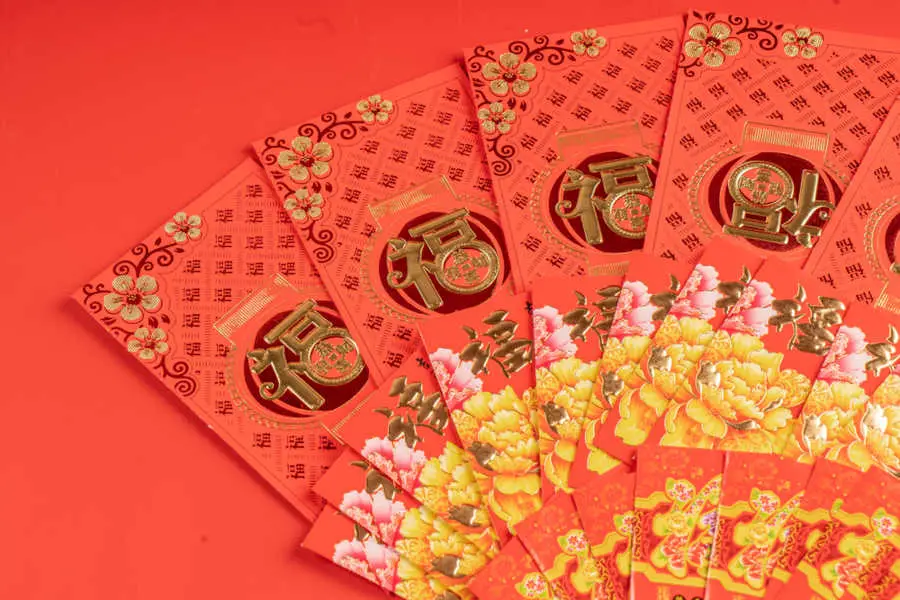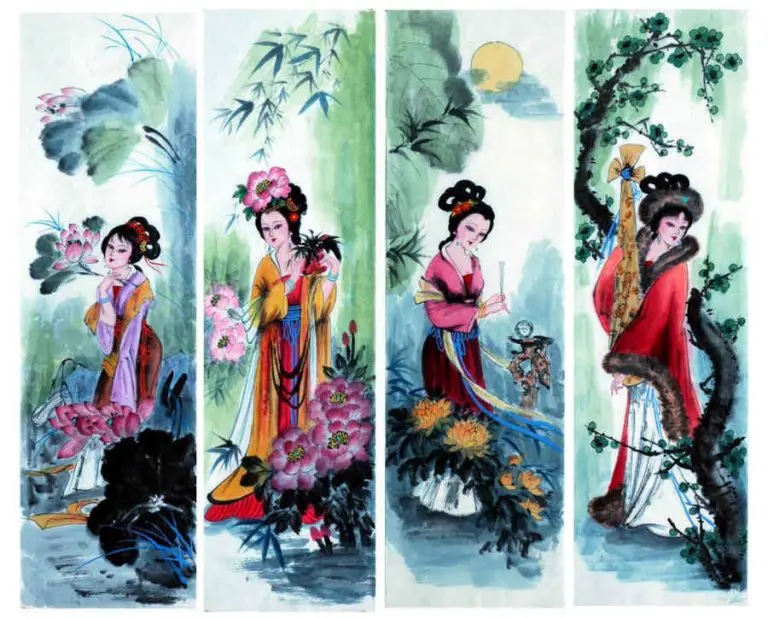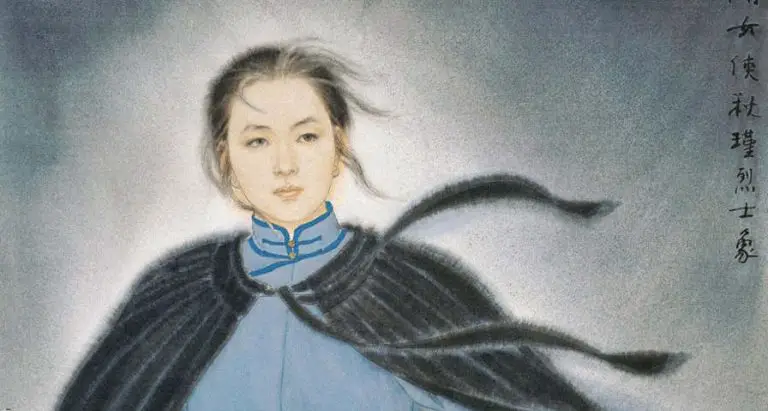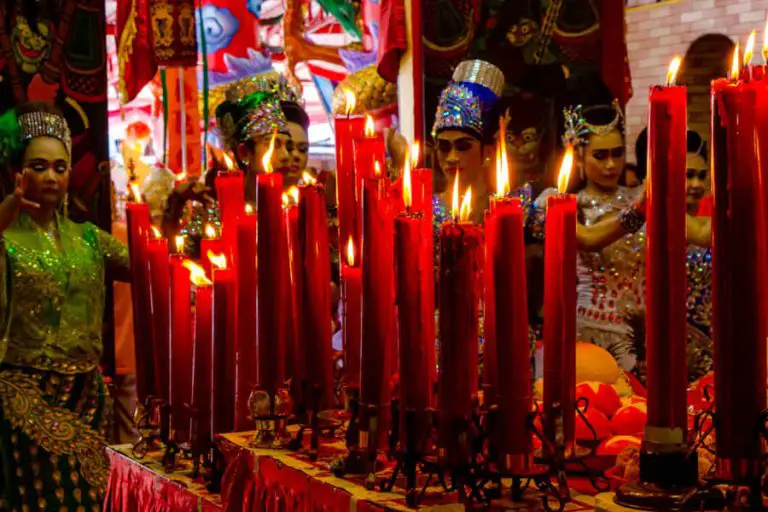The Red Envelopes—the Hong Bao, Lai See, or Ang Pow— are a very important part of Chinese history and traditions.
Giving red envelopes (containing money) during the Chinese New Year is still a yearly practice not only in China but in many other East Asian and Southeast Asian countries or anywhere the Chinese culture is present.
Here, we will discuss all you need to know about the hongbao, and let us begin with a brief discussion about the philosophy behind the red envelopes.
What are Red Envelopes?
Red envelope, as the name suggests, is a red-colored envelope that always contains money when given.
Also called hongbao in its original Mandarin language, the red envelopes are most commonly given to children or single/unmarried adults during the Chinese New Year celebration, where Chinese families often gather together.
The hongbao typically are decorated with gold patterns or drawings. There are other common names for the red envelope according to the dialects, like Ang Pow or Ang Pau (hokkien dialect), Lai See (cantonese dialect), or simply Red Packet.
Take a look at these awesome Hongbao designs.– Aff.link
The Origin of The Hongbao
According to Chinese legend, in ancient times there was a demon or evil fairy named Sui (祟). Legend says that Sui is totally black, except for its colorless, transparent hands. Sui—according to the said legend—appears every Chinese New Year’s Eve and would touch a sleeping child’s head, causing mental illness.
This is why the Chinese New Year celebration is practiced by staying up late during new year’s eve, called Shousui or translated as “waiting for Sui”.
So, the elderly people started to thread coins with a red string, called ya sui qian or “money to suppress Sui”. The coins were given to children to entertain them, and to keep them awake to avoid Sui’s touch.
According to the same legend, eight noble fairies turned themselves into eight coins, protecting the children from Sui. Thus, the story spread and everyone started to follow the same practice to protect the children.
Why Give Red Envelopes?
Over the years, the ya sui qian was replaced with the red envelopes—the hongbao—.
Hongbao still maintains its original function as a symbol of protection from demons but has also developed to be a symbol of good luck and prosperity.
The color bright red plays a very special role in Chinese culture, and we’ll find it everywhere in China from the color of the national flag to clothing choices to even the colors of foods.
While there are several different versions of the history and myth behind this (Read more about this at medium.com, In the article “Why is red considered a lucky color for the Chinese?” – opens in new tab), the Chinese thought of the color red as a symbol of good luck, prosperity, and vitality.
This is why the red-colored paper of the envelopes is more important than the money inside it. Money, wrapped inside the red envelopes is believed to produce more prosperity for the following year—both for the giver of the envelope and the receiver.
Opening a red envelope in front of the giver is considered to bestow bad luck, and downright impolite. In a nutshell, those who receive a hongbao are wished another peaceful, prosperous, and happy year.
Check out our “Free Culture Library“. We have compiled some great free resources, about Chinese culture, for your research.
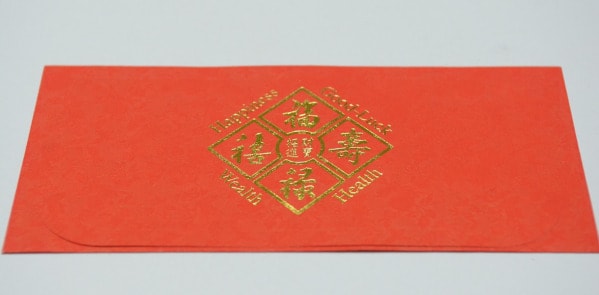
When Do You Give Red Envelopes?
As mentioned above, Chinese New Year is the most common time when red envelopes are given.
However, in Chinese tradition, red envelopes are also given during other celebratory occasions such as weddings, the birth of a newborn, graduation, and birthdays (especially elderly person’s birthday).
Since red envelopes are meant to share good wishes and symbolize happiness, it is worth noting that the hongbao are not given during funerals or sickness. During these mourning situations, if a person wants to give money in cash, typically they would switch into the traditional white envelopes.
Who gets a Hongbao?
In Chinese tradition—just like in many other cultures—, marriage is the sign of adulthood. So, traditionally speaking, a Chinese is obligated to hand out red envelopes after they are married.
Adults that have started earning money can give red envelopes during the Chinese New Year festival and any other celebrations—as mentioned above—, but it’s not obligatory according to traditions.
On the other hand, generally, someone will stop receiving red envelopes after they are married. However, there is not a set rule about this. Parents and grandparents might keep giving you red envelopes even after you are married as a sign of their good wishes and love.
In other cases, parents might stop giving red envelopes to their adult children that already earned their own money.
So, if you are a married adult (and/or has your own earnings), who should you give red envelopes to? According to traditional customs, here are the rules:
- You have to give red envelopes to your family members, especially elders (parents and grandparents) and the younger generation without an income or unmarried. This will include your own children, children of your siblings, unmarried younger siblings, etc.
- Close friends if they are without income or unmarried, or close friends’ children
- In some areas, it is customary to give red envelopes to all children you met during the festive season. This is rarely practiced nowadays, only in rural areas.
- Your employees if you own a business, and coworker’s or higher-ups’ children. Not obligatory but it’s a common practice for social networking purposes.
- Other people that are in need (I.e. beggars, your maid, etc.). Also not obligatory.
Since the Chinese New Year festivity is traditionally between close family and friends, they are usually the priority.
There are no restrictions in giving red envelopes, you can give hongbao to practically anyone. In general, however, it is uncommon to give red envelopes to those with a significantly higher income than yours (and in some cases, might be considered offensive), for example, it is uncommon to give a red pocket to your boss.
Related reading: “Chinese Good Luck Charms To Bring Good Fortune” –Opens in new tab

How Much Money is Appropriate?
Again, there is no set rule, and the appropriate amount will depend on your own financial situation and the receivers. For example, if you are giving a red envelope to a child in poor rural areas, the expectation will be lower.
On average, however, “lucky money” for immediate family members usually range around RMB 200-1,000, the equivalent of 28.2 to 141 US dollar. However, the amount might vary depending on the receiver, such as:
- Envelopes for your parents and grandparents typically range from RMB 500 to RMB 2,000 (around $70-$280).
- For younger children in the immediate family or children of close friends/colleagues, RMB 50-200 is appropriate (around $7 to $28). For older teenagers or adults without any income, you can give more depending on your ability (i.e., up to $100).
- For your own children, RMB100 up to any amount depending on your ability ($14 and above).
- For your employees, around RMB100 to RMB1,000 depending on the size of your business, given on the last working day before the festive holiday.
- For other children (i.e. random children who greets you with happy new year), small amounts like RMB10 to 20 is appropriate.
Check out our “Free Culture Library“. We have compiled some great free resources, about Chinese culture, for your research.
How to Give and Receive?
Tips on Giving a Hongbao
- Chinese are superstitious with numbers, so avoid giving amounts starting and ending with 4 (i.e. RMB 400 or $40 or $14). The number 4 sounds similar to death’ in Mandarin Chinese, so it’s always considered as bad luck. On the other hand, amounts starting and ending with eight is considered good luck, for example, $88 or RMB 888. Also, giving money in odd numbers (i.e. $37) is also considered unlucky.
- The Chinese New Year celebrations last for 16 days, starting from New Year’s Eve and ending with the Lantern Festival. During these days, it is wise to prepare some red envelopes in advance and always carry them with you, just in case you stumble into someone you might need to give an envelope to. The same principle also applies to birthday celebrations and other occasions where red envelopes are given.
- Avoid putting coins in the red envelopes. It’s not considered unlucky or against traditions, but rather it’s impractical due to the weight and sounds produced by the coins.
- It’s considered tradition to put brand new bills inside the hongbao. So, for several weeks leading up to Chinese New Year’s Eve, the banks in China typically have long queues due to people wanting to exchange old bills for new ones. Again, prepare ahead so you can avoid the queues.
- If you need to give red packets to many different people and plan to give different amounts, you can use different envelope designs. Put different amounts in differently designed envelopes, so you can easily differentiate between, say, those containing $88 and those containing $888.
- Chinese culture emphasizes subtlety instead of bluntness. So, when handing out the red packet, avoid saying something like “Here is the hongbao!”, but instead you can use subtle phrases like “Wish you success this year”, or simply “happy new year.”
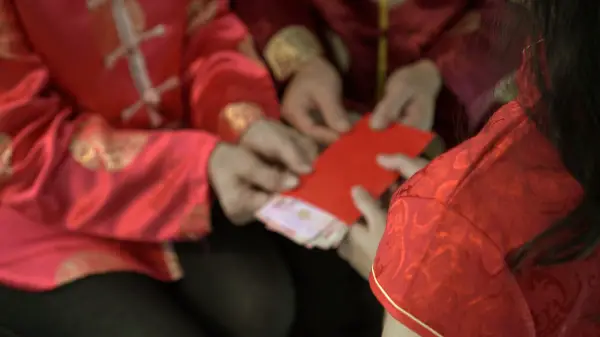
Tips on Receiving Hongbao
- Never open or even peek inside the red envelope in front of the giver. Usually, the hongbao is only opened when the receiver is at their home (to avoid bad luck), but even if you are not superstitious, only open the hongbao in private.
- The tradition is to always receive a red envelope with both hands. It is considered impolite (and for the superstitious, believed to produce bad luck) if you only use one hand.
- Typically the receiver must say their Chinese New Year greetings, commonly 发财 (Gōngxǐ fcái), “happiness and prosperity”, before the giver will give their red envelope. The greetings are spoken while giving the Chinese fist-and-palm salute (Read more about fist-and-palm salute at topchinatravel.com. In the article “Chinese Etiquette: Fist and palm salute“-opens in new tab).
- Not commonly practiced nowadays, but traditionally children must kneel while performing the fist-and-palm salute while receiving the hongbao from older family members. It is worth noting that this tradition is still practiced in some areas, especially in rural China.
- After you receive the red envelope, say thank you and express your gratitude. You can simply express good wishes in English if you can’t speak Chinese (i.e. “best wishes for the new year”), but you can also say common Chinese New Year greetings like 吉祥如意 (jíxiáng rúyì), “may your wishes come true”.
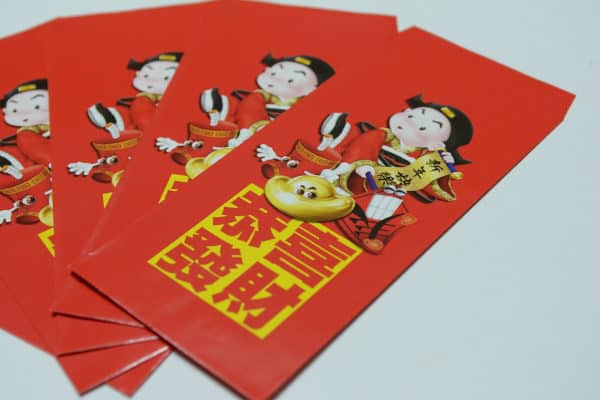
Different Hongbao designs
Red envelopes typically come in a rectangular shape, which according to traditions, represents a shield to symbolize protection. The size can vary from a small one that can carry folded banknotes to a bigger envelope that can accommodate unfolded bills.
All hongbao will be decorated with an image (usually representing the Chinese zodiac animal for that year), Chinese characters, or both. These decorations are usually in gold, embossed design to symbolize wealth.
Here are the common decorations on red envelopes and what they mean:
- The Chinese deities Fuk, Luk, and Sau (three immortals), symbolizing wealth, power, and longevity.
- Fish represents wealth and luck.
- Children represent joy.
- Chinese zodiac animals, usually the animal for the year is portrayed.
- Phoenix and dragon, especially on wedding red envelopes.
- Mandarin citrus, symbolizes wealth.
Take a look at these awesome Hongbao designs.– Aff.link
Digital Hongbao: Tradition Meets Technology
Nowadays, the use of cash money is rapidly diminishing in China (and all over the world). WeChat Pay is now widely used as the main payment gateway in China, as well as by other vendors like Alipay (source: businessinsider.com).
These payment gateway platforms offer the feature to give digital hongbao, complete with red and gold festive digital envelopes and colorful greeting messages.
This trend to give red envelopes digitally has been really popular in the past few years, giving a chance for us who is currently abroad during the holiday season to send our greetings and best wishes through the digital hongbao.
Earlier this year during the Chinese New Year holiday, the government-sponsored Spring Festival Gala even included a digital red envelope event, where TV viewers can shake their phone and win digital envelopes.
Digital hongbao also allows red envelopes to become an everyday thing, we can send them as surprise gifts without any occasion, to thank someone, or even as an incentive for others to like your posts on social media (commonly done by Chinese influencers).
End Words
The red envelopes—the hongbao— have been a major tradition in China for centuries, based on Chinese ancient folklore and legends.
However, tradition has crossed both cultural and religious boundaries. Chinese diaspora all over the world still practice the tradition of giving red envelopes, but it has also become a common practice for the Islamic communities in Southeast Asia during the Eid al-Fitr celebration.
An Introduction to Chinese History & Culture (Aff.link)
Dive into China’s rich past and intriguing present! From ancient dynasties to modern powerhouses, uncover Chinese culture facts, pivotal moments, and the captivating tales that have shaped this vast nation.
Stay in Touch
 Join our newsletter by using the forms on this website or click here!
Join our newsletter by using the forms on this website or click here! Follow us on Google News
Follow us on Google News Follow us on Facebook
Follow us on Facebook
Feature Image from Depositphotos

